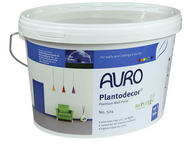Mould: the causes, remedies, and preventions
Posted by Celtic Sustainables on 25th Jul 2017
Mould is a microorganism which spreads via spores floating about in the air, and which loves moist, warm, organic environments. It will only become visible once it has been growing for quite a while and you pull the sofa away from the wall in search of a missing sock.
Where a mould infestation happens, it’s important to figure out the cause of the moisture and any invisible mould which may exist. If your home smells particularly musty or earthy, you may find that you have mould hidden behind furniture, wallpaper, claddings, or heavy curtains. The resistance of mould to extreme conditions such as dryness, strong heat, or frost makes mould a survivor of the spore world. Dried mould stains should be treated as damp ones, as they will revitalise if brought into contact with moisture again.
There are two main reasons for mould growing indoors. They are:
Structural shortcomings
Mould is a great fan of dampness and humidity. Structural issues such as water damage, insufficiently dried new builds, cold bridges, cracks in the masonry, slipped roofing tiles, overflowing gutters, or rising moisture due to missing or defective horizontal water stops can provide sources of humidity. Using a breathable paint will help to rid your home of excess moisture.
Home-made problems
The problem with mould is often home-made. Ventilation and heating usually have something to do with its existence, especially in houses which have been airproofed in accordance with the new Energy Savings Ordnance. It is quite common for people to underestimate the amount of water expelled into our homes during a single day.
We will usually generate around 1.5 litres of water in the air when we shower, and another litre in sweat throughout the night. Plants also contribute, as does cooking and clothes-drying. The moisture must be allowed outside to prevent dampness.Remember that correct ventilation is no use without heating.
Warm air absorbs more moisture than cool air, so more moisture is transported outside.
Avoiding Damp
To stop damp from developing, keep the relative air humidity at approximately 50% by for example;
- Heat each room equally, as the temperature difference between rooms should be no greater than 5°C.
- Doors leading into cooler rooms such as bathrooms should be kept closed so as to prevent warm and damp air from the other rooms from condensing on the walls and mirrors.
- Cross ventilate rooms several times each day for 5-10 minutes each time between November and March, and for 10-25 minutes between April and October. Permanently ventilating by keeping window constantly ajar is not the best idea, not least due to the potential heating costs.
- Keep cellars ventilated. Windows and doors should be closed in summer, and should provide a sufficient draught in winter. Only ventilate basements if the outdoor temperature falls below the indoor wall temperature.
- Get rid of moisture from showering or cooking to the outside immediately, and try not to hang your washed clothes indoors as the water gets trapped.
- In older houses and eco builds where the walls need to be "breathable", use water permeable construction materials and wall coverings such as all of the AURO wall paints range.
- When placing furniture, leave at least 5cm between the pieces and the walls.
If you are unable to ventilate rooms (for example in the winter), consider investing in a dehumidifier to get reduce the amount of water vapour in the room.
If you already have mould, the sooner you tackle it the better. A badly infested area needs to be treated as soon as it can be as mould spores are released with each air movement. Conventional mould removers will often contain nasty chlorine compounds which really only replace one health risk with another.
AURO
anti-mould products are FREE of chlorine and toxic VOCs but eliminate mould very well.
AURO 327 Anti-Mould Paint offers great mould protection thanks to its high pH value!
- Solvent-free, breathable white interior wall paint with high coverage.
- Virtually free from VOC's
- Apply with a roller or brush.
- Great way to keep old walls breathing that are prone to damp.
- Ideal for window recesses and rooms where mould may be a problem due to poor ventilation.
- Lime-based, with a slightly textured finish.
For excellent results in tackling actual mould growth, we recommend the prior use of AURO
Mould eliminator No. 412 and AURO Mould stop No. 413 .
Mould - The Invisible danger and how black mould can effect your health
Having mould on internal walls has a bigger effect on peoples health than most would think. It can cause outbreaks in reactions, can have a huge effect on people suffering with asthma, can cause an out break of common colds, shortage of breath and many other issues, especially for those with an already weak immune system. By using Auro's anti-mould system, you are tackling the problem instantly, by being able to wash off mould within an hour of application. And by choosing Auro, you are not adding any other harmful chemicals or toxic fumes into the environent.
If mould has already settled in, tackle it!!
Further reading: When we tested anti-mould paint on a bathroom ceiling


